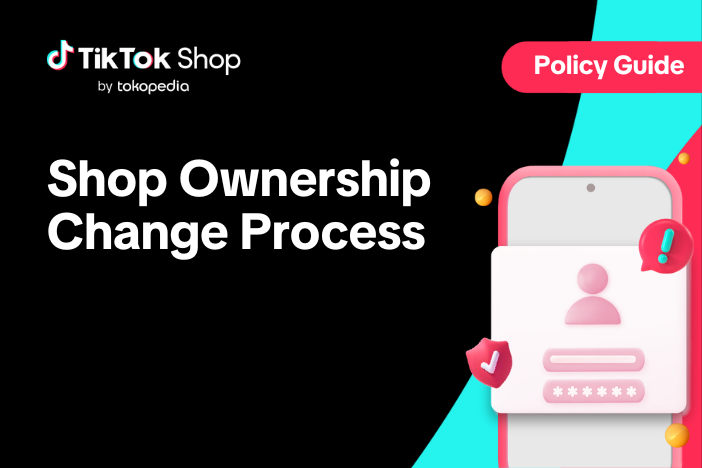Mastering After-Sales Requests: to Handle Refunds, Exchanges, and Reshipments
10/03/2025
After-sales requests can directly affect your customer satisfaction, return rate, and even shop rating. Instead of just reacting, let’s turn every request into a chance to build trust—through smart operational moves.

Key Timelines That Impact Your Response
Before we dive into the request types, here are some important timelines you must remember: 💡Use your daily task checklist to monitor “Returns & Refund” tab at least twice a day—especially during campaign periods.
💡Use your daily task checklist to monitor “Returns & Refund” tab at least twice a day—especially during campaign periods.
Identify the Right Type of Request First
Before acting, verify the request type to avoid taking the wrong action.Request Type | Key Sign to Spot | Ops Behavior |
| Refund Only | Buyer doesn’t want to return the item | Check proof (e.g., video/photo) before approving; don’t assume buyer is right.See our step-by-step refund-only feature guide |
| Return + Refund | Buyer wants to send item back | Confirm item condition on arrival before clicking “approve.” Keep unboxing video if needed.See our step-by-step return and refund feature guide |
| Reshipment | Buyer received wrong/damaged/missing item | Recheck warehouse logs & packing slip to avoid repeating the same mistake.See our step-by-step reshipment feature guide |
| Exchange | Buyer wants different size/model | Confirm inventory & prepare return label early to reduce processing time.See our step-by-step exchange feature guide |

Operational Habits to Improve Efficiency
Managing aftersales doesn’t have to be messy. With the right operational habits, you can speed up response time, avoid internal confusion, and improve customer satisfaction. Start with these best practices:Habit | What to Do | Why It Matters |
| Create a Standard Response Template | Save common reply formats in Seller Center (e.g., "We’re reviewing your request…") | Saves time and ensures consistent tone when responding to buyers |
| Build a Returns SOP with Your Ops Team | Align with team on who checks product, confirms damage, and processes refund | Avoids internal confusion and speeds up resolution |
| Use Return Reason Tracking Sheet | Log all return/refund cases with reason tags | Helps you detect recurring issues (e.g., damaged packaging) and fix them |
| Assign One PIC for After-Sales Handling | One person per shift monitors the “Returns/Refunds” dashboard | Prevents delay or missed requests, especially during campaign days |
| Label Returned Products Properly | Place returned items in a labeled, separate shelf | Avoids mistakenly reselling defective or incorrect items |

Mistakes to Avoid & How to Fix Them
Even a small error in handling aftersales requests can lead to auto-approved refunds, lost revenue, or dissatisfied buyers. Here's a quick list of common mistakes and how to avoid them:Mistake | What Happens | ✅ How to Fix It |
| Ignoring Request Over 2 Days | System auto-approves request, loss of revenue | Set reminder alarms, check dashboard twice a day |
| Clicking Wrong Button (e.g., Refund instead of Reject) | Irreversible action, item not returned | Double check request type + buyer’s comment before clicking |
| Accepting Without Clear Proof | Buyer may misuse policy | Ask for clear images or videos of product issue first |
| Not Updating Return Status | System sees it as seller delay | Always click "Confirm Receipt" after item arrives |

Final Checklist for After-Sales Excellence
Before you log off today, make sure you’ve covered the key tasks that keep your after-sales operations strong:- Respond to all requests within 2 working days, even if you're still investigating
- Double check the request type before clicking any button (refund, reject, etc.)
- Coordinate with your warehouse or ops team for every return case
- Use Data Compass to track refund reasons and identify recurring product issues
- Use response templates to ensure fast, consistent communication with buyers
Có thể bạn cũng quan tâm về

Tokopedia & TikTok Shop Commitment for Your Integration Expe…
Thank you for the trust and constructive feedback you've shared with us. We’ve heard your feedback a…

Integration to Tokopedia App
This feature guide is intended for TikTok Shop by Tokopedia sellers, both who don't have and already…

Shop Ownership Change Process
Note: You will only be able to change ownership to corporate sellers (individual to corporate, or co…

What should I do if my account has been compromised?
If you are unable to sign in to your account or can no longer have access to the registered email or…

Late Dispatch Rate (LDR)
Note: Orders with Instant, Sameday, and Sameday 8-hour delivery are only available via Tokopedia. Cl…

What is the Seller Performance Evaluation Policy?
TikTok Shop by Tokopedia Seller Performance Evaluation At TikTok Shop by Tokopedia, we value safety,…

Inactive Seller Accounts
When will I be considered an Inactive Seller? Sellers that do not interact with their TikTok Shop by…

Access Management on Seller Center
As a shop owner, you can add sub-accounts for your employees to help manage and operate your shop. I…

Shop Marketing Account
This article will introduce a marketing account for your Shop. Shop Marketing account is TikTok acco…

Shop Official account
The TikTok account that represents the official identity of the TikTok Shop by Tokopedia official ac…